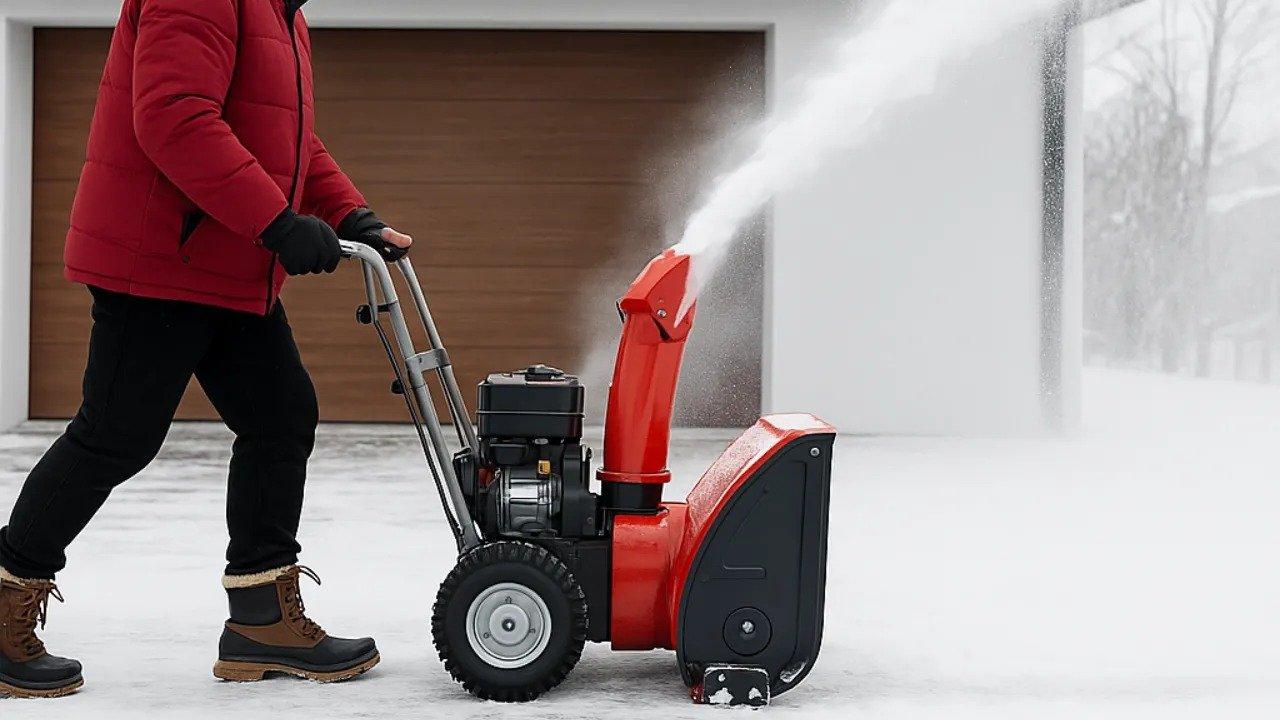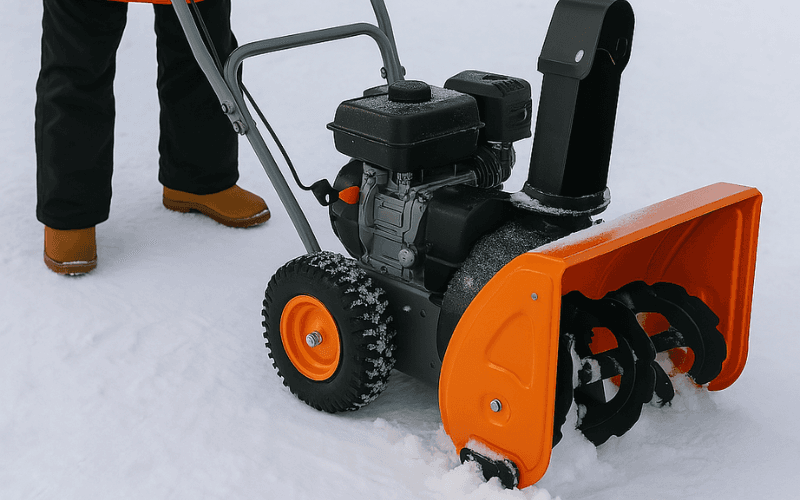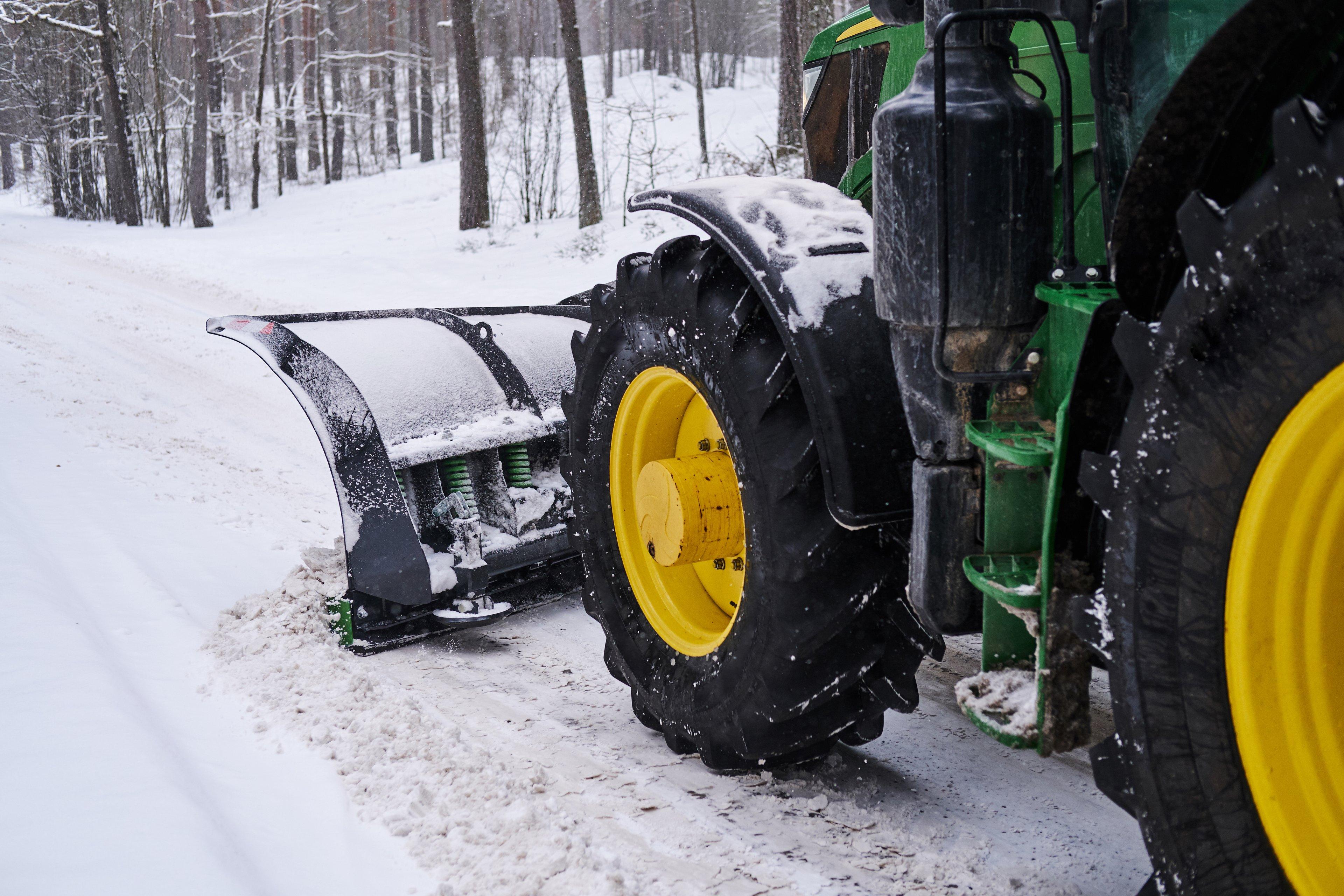Repair help
Snow Blower Won’t Start? Here’s Why and How to Fix It
AZparts Team
Updated on June 18, 2025
7 min read
There’s nothing worse than waking up to fresh snow, only to find your snow blower won’t start. Fortunately, most of these issues are easy to diagnose and fix at home with a little know-how and the right parts. In this guide, AZParts will walk you through the most common causes and quick fixes, so you can get back to clearing snow in no time.
_1747325797.png&w=3840&q=75)
1. Snow Blower Won’t Start? Reasons and Quick Fixes
When your snow blower refuses to start—especially right before a heavy snowfall—it can be frustrating. Fortunately, many common issues have simple fixes. Here's a breakdown of the most likely causes and how you can quickly get your snow blower running again:
1.1. Fuel-related issues
Stale fuel can easily clog the small jets inside a snow blower’s carburetor. To prevent buildup, you should either run the engine dry before storage or treat the fuel with a stabilizer.
Using a stabilizer is often the better option. After adding it to a full tank, run the engine for a few minutes to circulate the treated fuel throughout the system. This helps protect the carburetor from moisture, gum, and corrosion during storage.
To keep your machine in top shape, consider exploring the Snow Blower Carburetor collection from AZParts. This collection includes quality replacement components and long term durability. Whether you're maintaining or upgrading, AZParts has what you need to keep your carburetor performing at its best.
Closing the fuel valve and letting the engine run until it shuts off helps prevent the buildup of rubber and varnish over time (Source: AZParts)
1.2. Ignition system problems
When your snow blower won’t start, the ignition system is often the first place to check. The spark plug is a common culprit, especially if it’s fouled, corroded, or loose. If you haven’t inspected it recently, remove it and look for damage.
You should clean off any carbon buildup with a wire brush or replace the spark plug if it’s worn. Also, make sure the spark plug gap is correct and the wire is firmly connected. Don’t forget to check that the On/Off switch is in the “On” position, this simple step is frequently overlooked.
The first thing you should check when your snowblower won't start is the spark plug (Source: IStock)
1.3. Mechanical failures
Cold weather can do more than just make your fingers stiff—it can also affect how your snow blower starts. If the starter cord feels heavy or stuck, the problem may be thickened oil or a seized piston. After sitting idle for months, many snow blowers struggle to start smoothly.
To fix this, check that you are using the correct type of oil. Oils with low viscosity like SAE 5W30 or synthetic oil for winter use are more suitable for freezing temperatures. If the engine feels locked, try rotating it slowly by hand if possible. You should also inspect the recoil starter assembly, and replace it if the cord is damaged or doesn’t retract properly.
Check that you are using the correct type of oil or not (Source: AZParts)
1.4. Maintenance and storage errors
Leaving fuel in the tank for months without a stabilizer can clog the carburetor and cause startup issues. Before storing your snow blower, you should add fuel stabilizer, run the engine briefly, and replace the oil to prevent damage. Storing the machine in a dry, covered space also protects it from rust and ensures it will be ready when winter returns.
In addition, when storing your snow blower during the off-season, it's a good idea to use a snow blower cover. A proper cover protects the machine from dust, moisture, and pests that can block the air intake or damage internal parts. This simple step helps ensure your snow blower is clean, dry, and ready to start when winter returns.
You should add fuel stabilizer, run the engine briefly and replace the oil (Source: IStock)
1.5. Electrical issues
Make sure the outlet is working and the power cord is fully connected. If the machine uses a battery, try charging or replacing it. Inspect the terminals and wiring for signs of corrosion or looseness. If the pull cord still works, the issue is likely isolated to the electric start system.
If trying to start the engine with a pull cord works, then the problem is definitely with the electric starting system and not the engine (Source: Freepik)
1.6. Air Intake or Choke Issues
Your snow blower engine needs proper airflow to run smoothly. A clogged air filter or incorrect choke setting can prevent the engine from starting or cause it to stall shortly after. When starting from cold, make sure the choke is fully closed, then gradually open it as the engine warms up.
Before the season begins, inspect the air intake for any blockages. Rodents or insects may have built nests inside while the machine was in storage. A quick cleaning or replacing of the air filter can greatly improve engine performance and prevent starting troubles.
Inspect the air intake for any blockages (Source: AZParts)
2. FAQs about Snow Blower Won’t Start
Still scratching your head? Here are answers to some of the most common questions people have when their snow blower refuses to fire up:
2.1. Why won't my snow blower start?
There isn’t just one reason. A snow blower might not start due to stale gas, a dirty or clogged carburetor, a bad spark plug, incorrect choke settings, or even old engine oil that’s thickened in cold temperatures. If your machine has an electric start, it could also be an issue with a dead battery or a faulty switch.
The key is to check the basics first: fuel, spark, and airflow. Nine times out of ten, the culprit is something simple and fixable.
See more: How to Clean A Snow Blower Carburetor
2.2. What to do when the blower won't start?
Start with a quick checklist:
- Fuel: Is it fresh? Has a stabilizer been used if it’s been sitting for a while?
- Spark: Pull the spark plug, check for fouling, clean or replace it if needed.
- Choke & Throttle: Make sure the choke is set correctly for cold starts and that the throttle is open.
- Primer bulb: Press it 3–5 times before starting.
- Battery (for electric models): Try using the pull start if the button does nothing—this helps confirm if the issue is electrical.
- If all else fails, try draining the carburetor bowl to clear out old or water-contaminated fuel. A little maintenance goes a long way.
2.3. How do you know if you flooded your snowblower?
You’ll usually smell raw gas, and the engine may sound like it’s trying but just won’t catch. If you’ve pressed the primer bulb too many times or used the choke for too long, you may have flooded the engine with excess fuel.
2.4. How do you unclog a carburetor on a snowblower?
Unclogging a carburetor can sound intimidating, but it’s manageable with a little care. First, make sure the gas tank is empty or the fuel valve is shut off. Then:
- Remove the carburetor bowl underneath the carb body (usually held on by one bolt).
- Clean out any sludge, debris, or water in the bowl.
- Use a carburetor cleaner spray to clean all jets and small openings.
- If you're comfortable, remove the float and needle to get deeper access.
- Reassemble everything carefully, making sure all gaskets and seals are in place.
- Sometimes, if the clog is too severe, it’s easier and more cost-effective to replace.
When your snow blower won’t start, it’s often something simple—a bit of old gas, a dirty spark plug, or a forgotten choke setting. With the right troubleshooting steps, you can save time, money, and frustration on cold mornings. And if it turns out your machine needs more than a quick fix, AZParts is your go-to source for quality replacement parts, expert support, and fast shipping. Don't let a stubborn blower slow you down—get it running right, and take on the snow with confidence.
Contact information:
- 8 The Green, Ste A, Dover, Delaware 19901-3618, United States
- support@azparts.com
Snowblower
Further Reading
Further Reading





